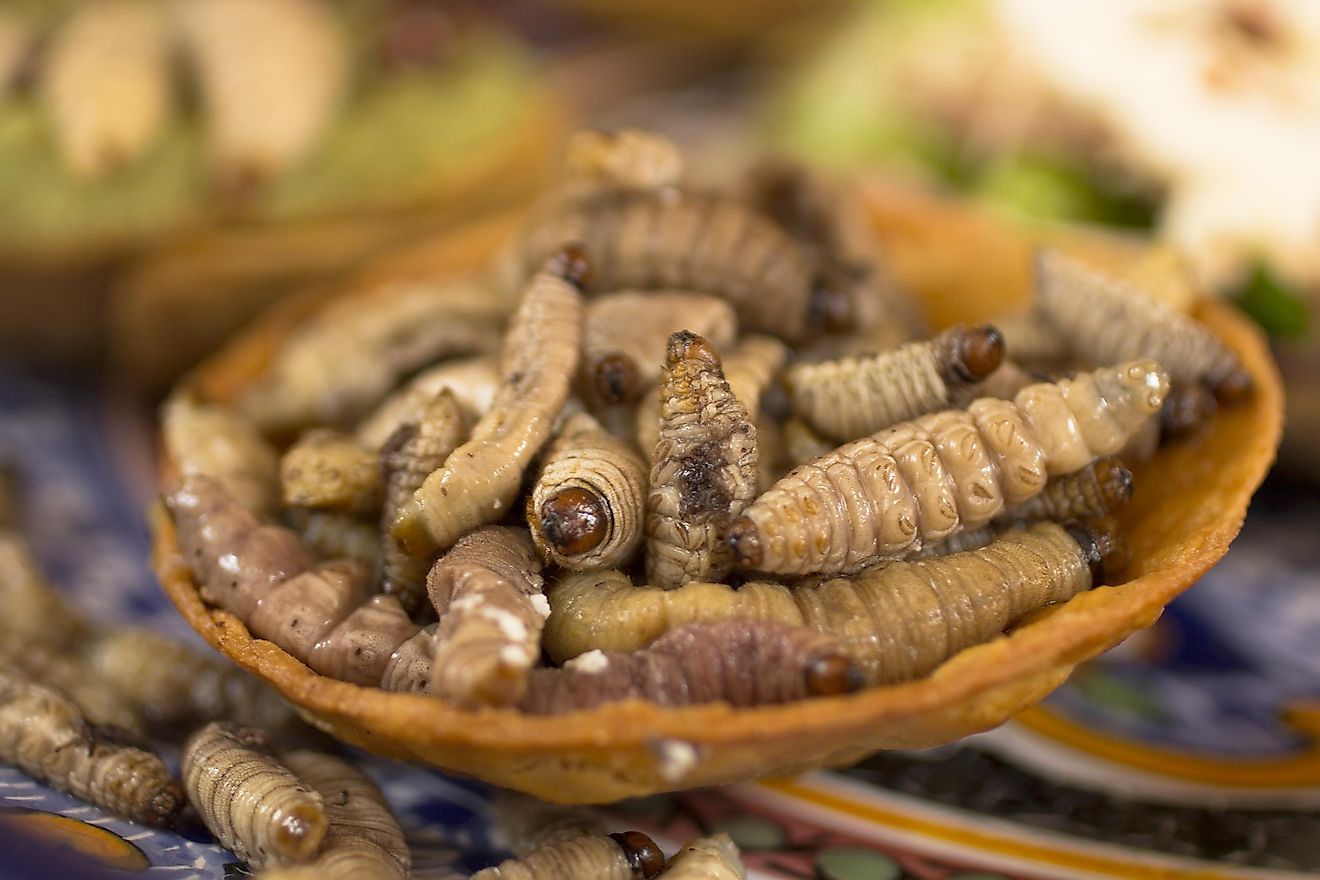What Do Grubs, Ants, And Hornets Taste Like?

Do you prefer your worms crispy or juicy? How would you like your scorpion served? These are not unusual questions in some parts of the world. Although the Western world has only a few species approved for human consumption, there is a long list of insects appreciated for thousands of years around the world. Please do not treat this list as a cookbook, as most wild insects are not similarly safe to eat. None of them should be eaten raw. If you have an allergy to dust, shellfish, or shrimp, never eat an insect, even a cooked one.
Agave Worm
This is not a worm, but rather larvae of either the Hypopta agavis or the Aegiale hesperiaris. These larvae are sometimes added to mezcal, strong alcohol made of Agave americana. Some believe that this is just a smart marketing trick while others say that it serves as proof of authenticity because they spoil quickly so the drink must be strong enough to preserve it. Mexico's tequila regulations do not permit the inclusion of insects or scorpions in tequila bottles. However, mezcal is not subjected to the same quality standards, so you can still find them con gusano. In Mexico, these larvae are thoroughly cooked and spiced and eaten as snacks. It is also sold grounded as an ingredient for a popular salt used on the rim of a margarita.
Bamboo Borer
This larva of the moth Omphisa fuscidentalis is a delicacy in some parts of China, Thailand, and Laos. They bore their way through bamboo, so have to be removed to protect the groves: a win-win. Deep-fried bamboo borer can be eaten as non mai phai in Thai. The flavor is very weak, similar to fried butter with a crunchy texture.
Honeypot Ants
This is the worker ants type, which specializes in accumulating food and liquid, like living storage that can hold and release food on demand. They are found in many parts of the world. These ants typically remain underground and can swell up to the size of a grape. Honeypot ants of the species Camponotus inflatus are a traditional delicacy of Australian Aboriginal people. They carefully open the nest and harvest the honeypot ants, then cover the nest again; that way, they keep the source alive and producing. In North America, the Paiutes of California and native tribes of Maine reportedly harvested and ate honeypot ants as well. In Africa, the San people add them to their diet. They taste slightly fruity, earthy, and a bit bitter, with notes of sweetness.
Hormiga Culona
Hormiga culona is a Spanish name for the species Atta laevigata. It is the largest species of the leaf-cutting ants native to South America. Hormiga culona are harvested a few weeks a year during their nuptial flight period, mainly by the people in rural Colombia, and sold across South America as a delicacy. They are marinated and roasted before consumption and are said to taste like a mix of bacon and pistachio. In Colombia itself, Hormiga culona is sold as a snack in movie theaters. Locals describe them the following way: "a good hormiga culona is crunchy on the outside and soft and floury on the inside. If they've been fire-roasted, you'll even get nutty, smokey flavors. If they are fresh, they crunch like popcorn."
The Lemon Ant
Myrmelachista schumanni, or the lemon ant, produces acid to warn the others when threatened. These acids give it a lemony taste when eaten. This species is quite incredible: they live and feed on Duroia hirsuta, so they produce a formic acid pesticide that kills off all other plants in the area. They also chase away herbivores in order to protect their plantation. Large colonies can maintain themselves for hundreds of years, and have up to 15,000 queens.
Ant Eggs
In Mexico, large eggs of the giant black Liometopum ant are gathered from agave roots, fried and eaten in tacos or escamoles. They are said to taste nutty, with the texture of cottage cheese once cooked.
Flying Ant
In Guatemala, the flying queens known as Sompopos are collected and prepared as a crunchy snack with lime and salt. The taste is described as "somewhat close to greasy pork rinds."
Bee And Wasp Larvae
Consuming bee larvae may not be the most sustainable choice since bees are on the decline around the world, and the entire agriculture depends on them. In many cultures, they are valued as delicious and healthy morsels as they grow on royal jelly, pollen, and honey. It is served sauteed in butter and is described as "mushroom-bacon" taste. Yellow wasp larva dish is called hachinoko: after harvesting, they are prepared into a crunchy snack fried in sugar and soy sauce. Adult wasps can be boiled, sauteed, roasted, and fried; they taste somewhat buttery and earthy. Emperor Hirohito of Japan was said to like boiled wasps with rice.
Japanese Giant Hornets
Some of the most impressive insects are deadly Japanese giant hornets. They are called "Yak killers" and kill up to 40 people a year in Japan as they inject venom capable of dissolving flesh. Their bite is excruciating, and, being carnivores, they are very aggressive and release a "call" pheromone, so other hornets of the group rejoin the hunt. These hornets can take on a beehive several thousand times larger in numbers. In Japan, however, there are a few esteemed hunters specializing in catching these hornets. The adults are used to create a three years old liquor, and large larvae and pupae are roasted or steamed, tasting buttery. For the obvious reasons, it is an extremely rare delicacy, not available for sale outside its native region.











